I’m a member of the Wadsworth Atheneum, the oldest continuously-operating public museum in the U.S., located in Hartford, CT. I went to a special lecture last week:
Sorry about the crappy pic, it’s partly due to where I was sitting. I took a screenshot of the speaker’s bio from the Cloisters’ staff page as she retired in 2021 (and she could go poof from the page any moment):
She was talking about a special exhibit from 2017: Small Wonders: Gothic Boxwood Miniatures.
Most of the talk was about these intricately carved rosary beads (and I will embed a cool video of one being taken apart at the end of the post), but I came to the talk because of the title slide, which was sent with the promo email.
I don’t think it was in the Met exhibit — it was a piece finally brought together in 2021 for the Wadsworth collection.
A Room of Wonders
This piece now lives in the Cabinet of Art & Curiosity at the Wadsworth, my favorite part of the Wadsworth. I call it the Room of Wonders.
When I ask the staff/volunteers “Where is the Room of Wonders?”, they know exactly what I’m talking about. It’s a mix of artworks, intricate craftwork, and natural wonders (like snail shells), and a combination of such:
Skeleton in a very intricate box
Here’s the piece that drew me to the talk: Miniature Coffin, c. 1500-1530
This tiny boxwood coffin depicts scenes from a parable in the gospel of Saint Luke (16:22–31) concerning the rich man who refused charity to a beggar named Lazarus, for which he was sent to hell upon his death. When Lazarus died, on the other hand, he ascended to heaven where he was comforted as he had not been on earth. The coffin was designed to be a memento mori, an object meant to be a reminder of the inevitability of death, with an intended warning against sin, and a lesson that faith in Jesus leads to eternal life in the hereafter.
The coffin was carved in multiple layers that are hinged together. Opening the lid reveals a corpse; as you take out or open a series of panels the corpse is shown in two additional states of decay. Other scenes represented in minute form include the Rich man—known as Dives in the Middle Ages— in chains and being licked by the flames of hell; Lazarus in heaven in the lap of Abraham; the Veneration of the Virgin Mary, The Last Judgment, and Christ in Majesty.
Are you ready?
Aw yeah, that’s the stuff. There is also other Memento Mori material in the Cabinet, which is why I like hanging out there.
My birthday is in a few days, hint hint.
Extra stuff: Rosary Bead
Check it out — it’s short:
Anyway, that’s what the lecture was about. These things were very intricate, and rather cool, and let’s just blame the Protestants for losing these really awesome things.

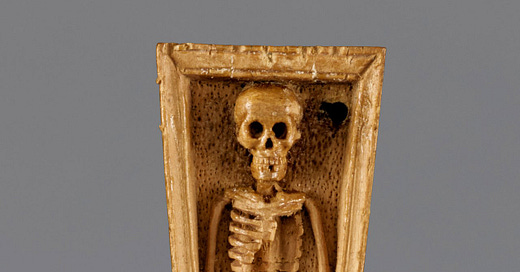


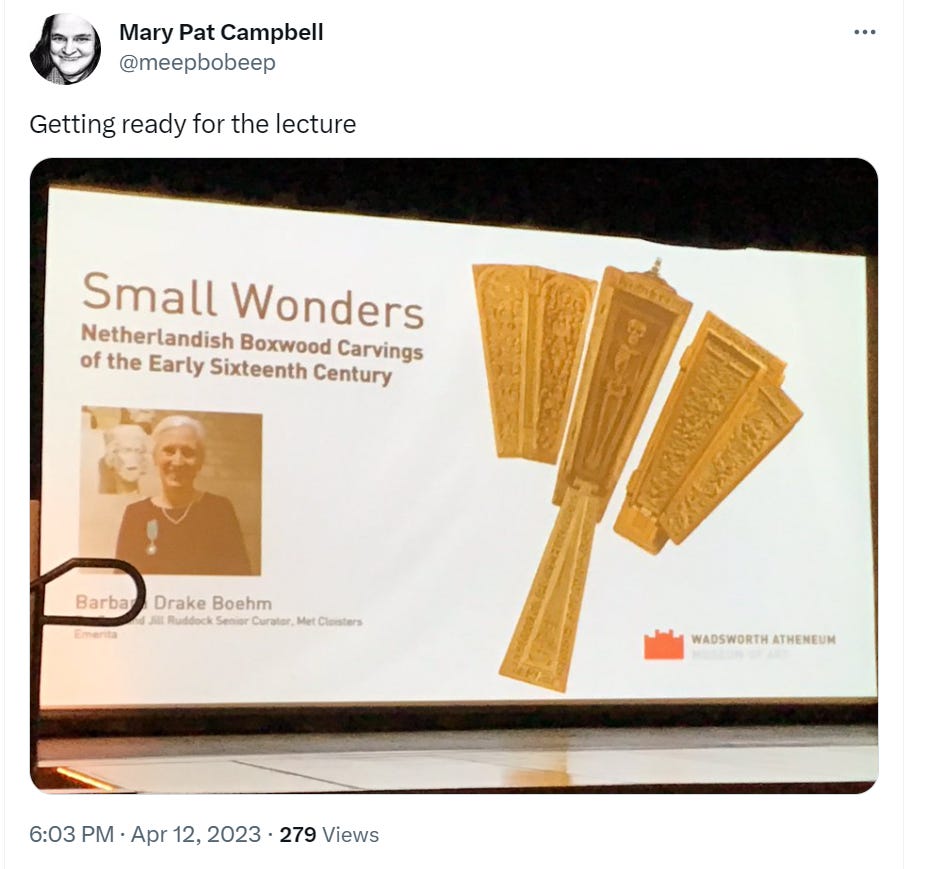



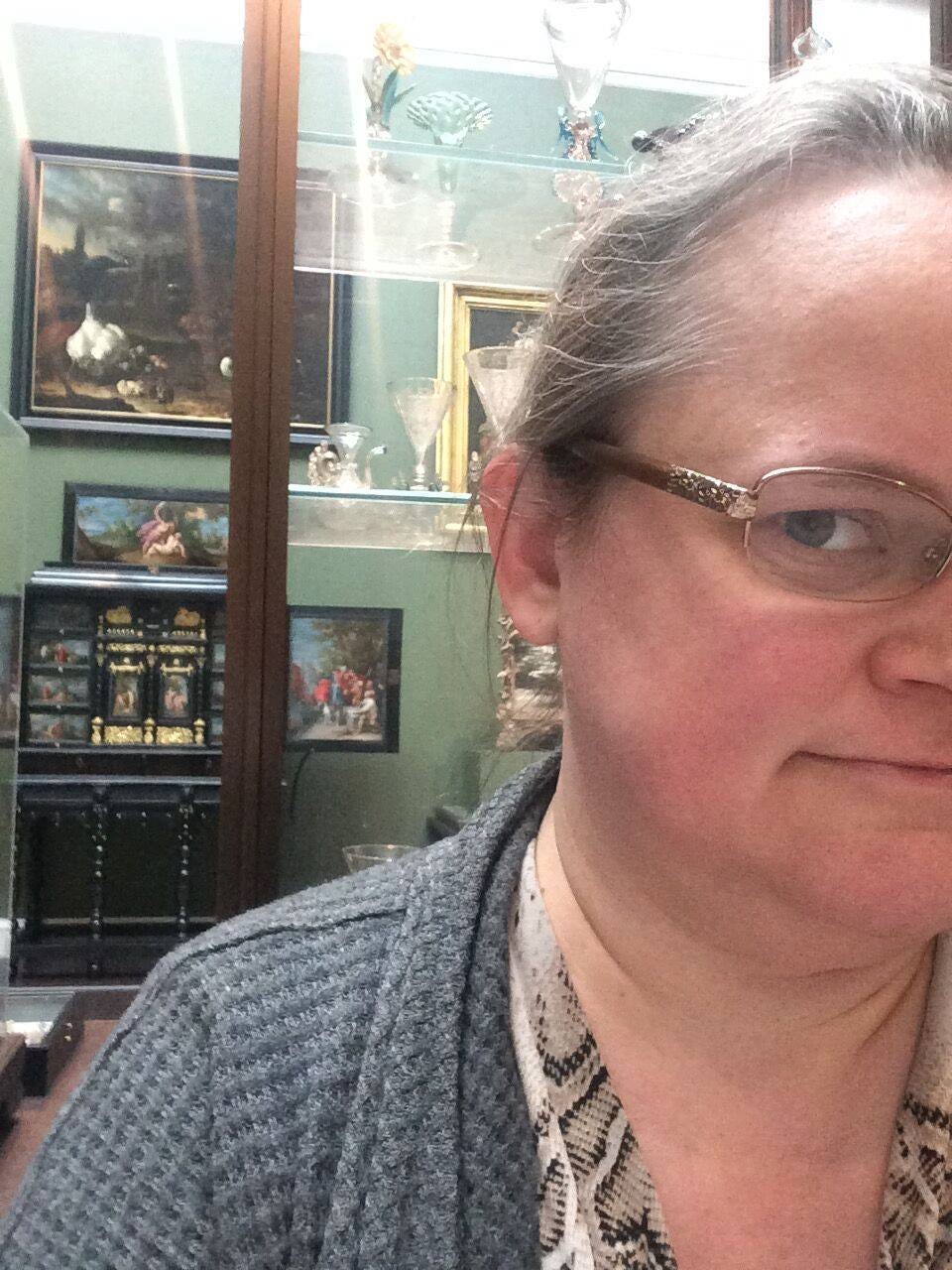
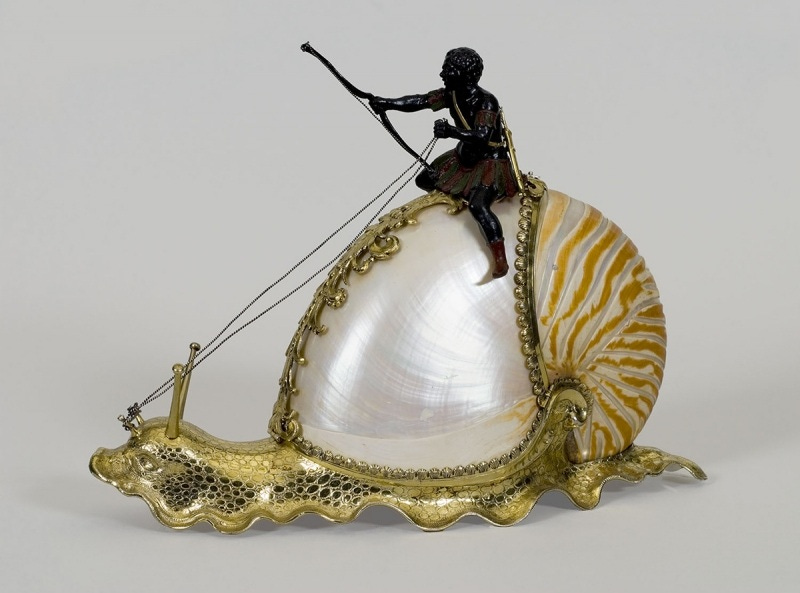
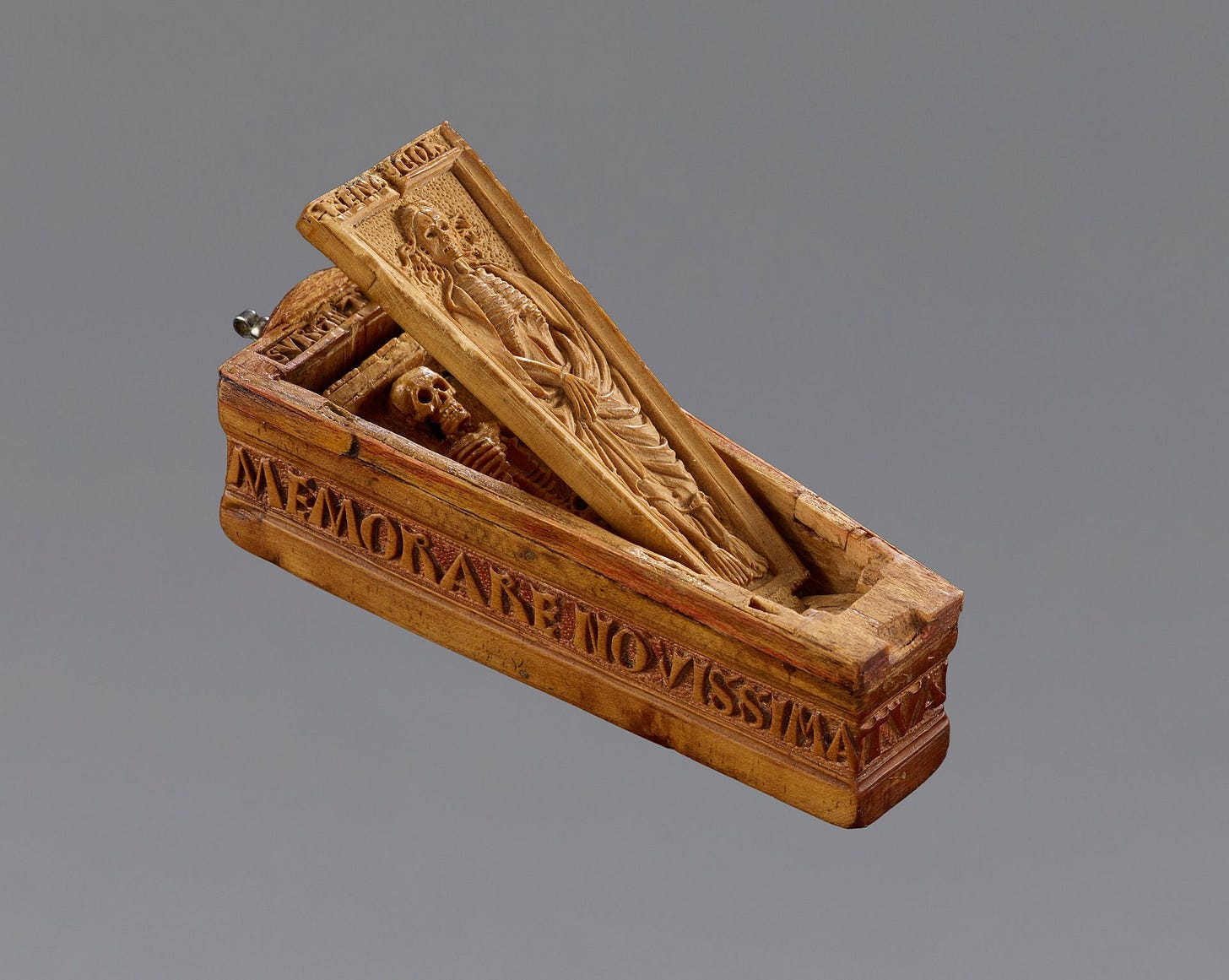
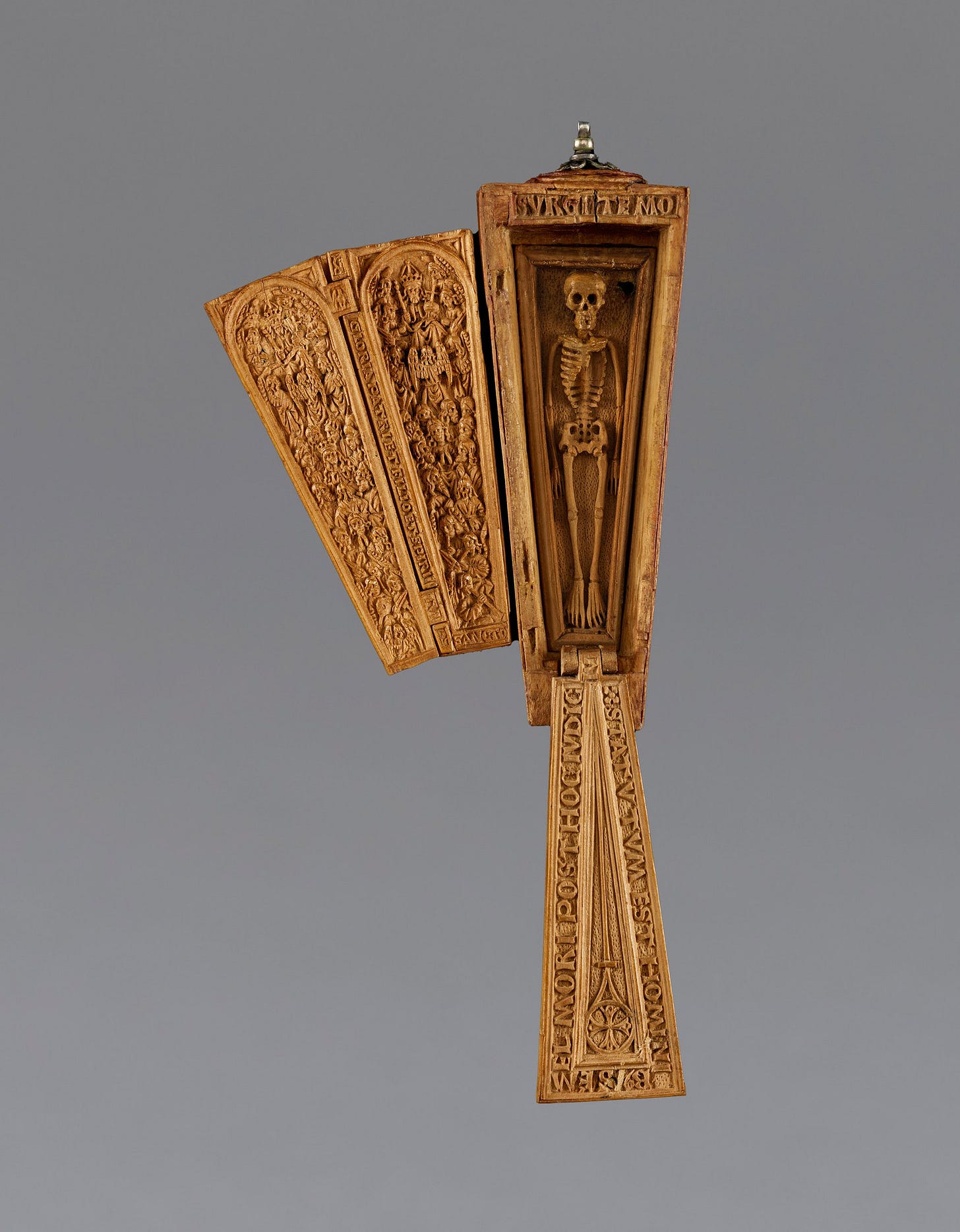
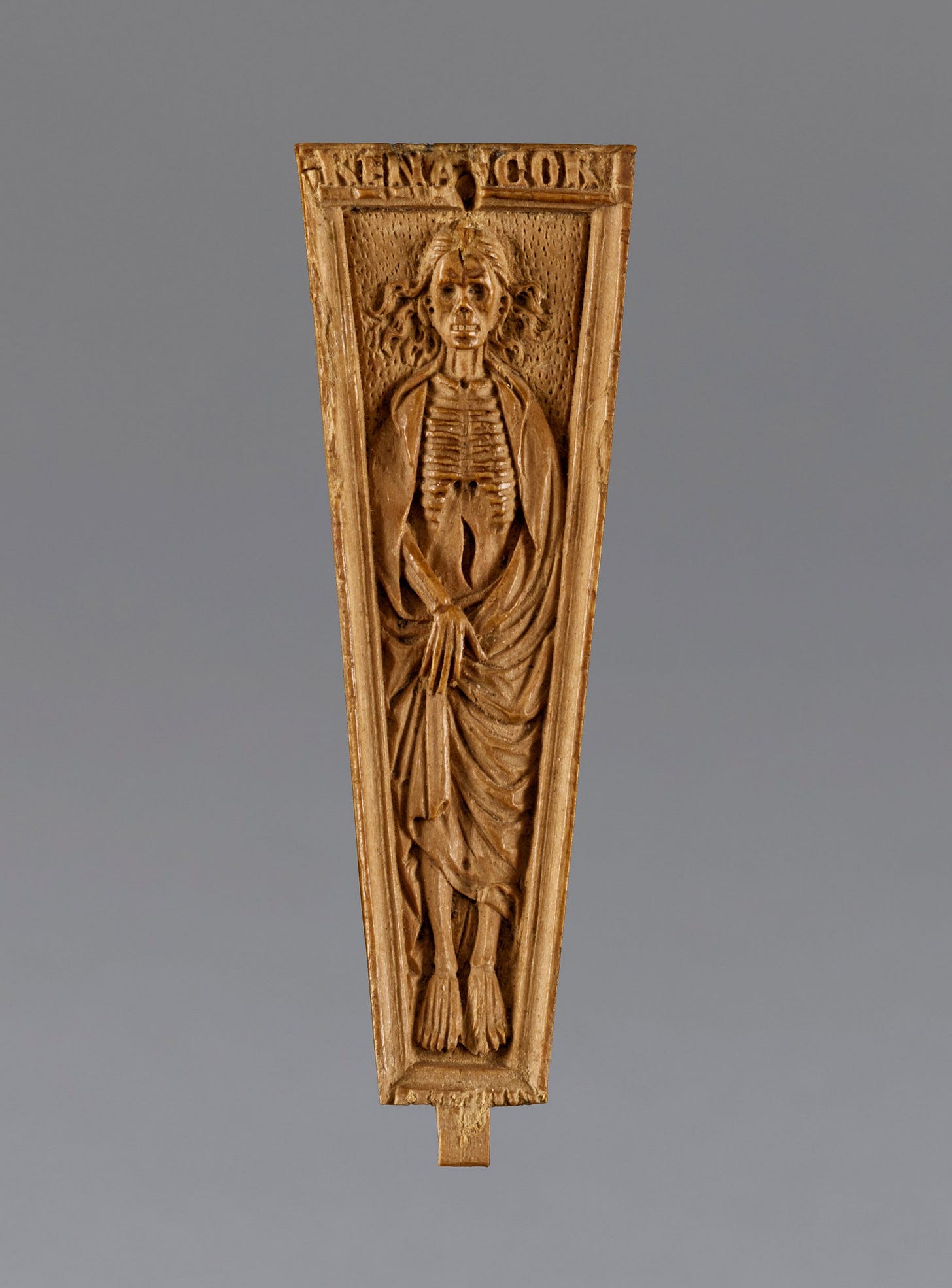

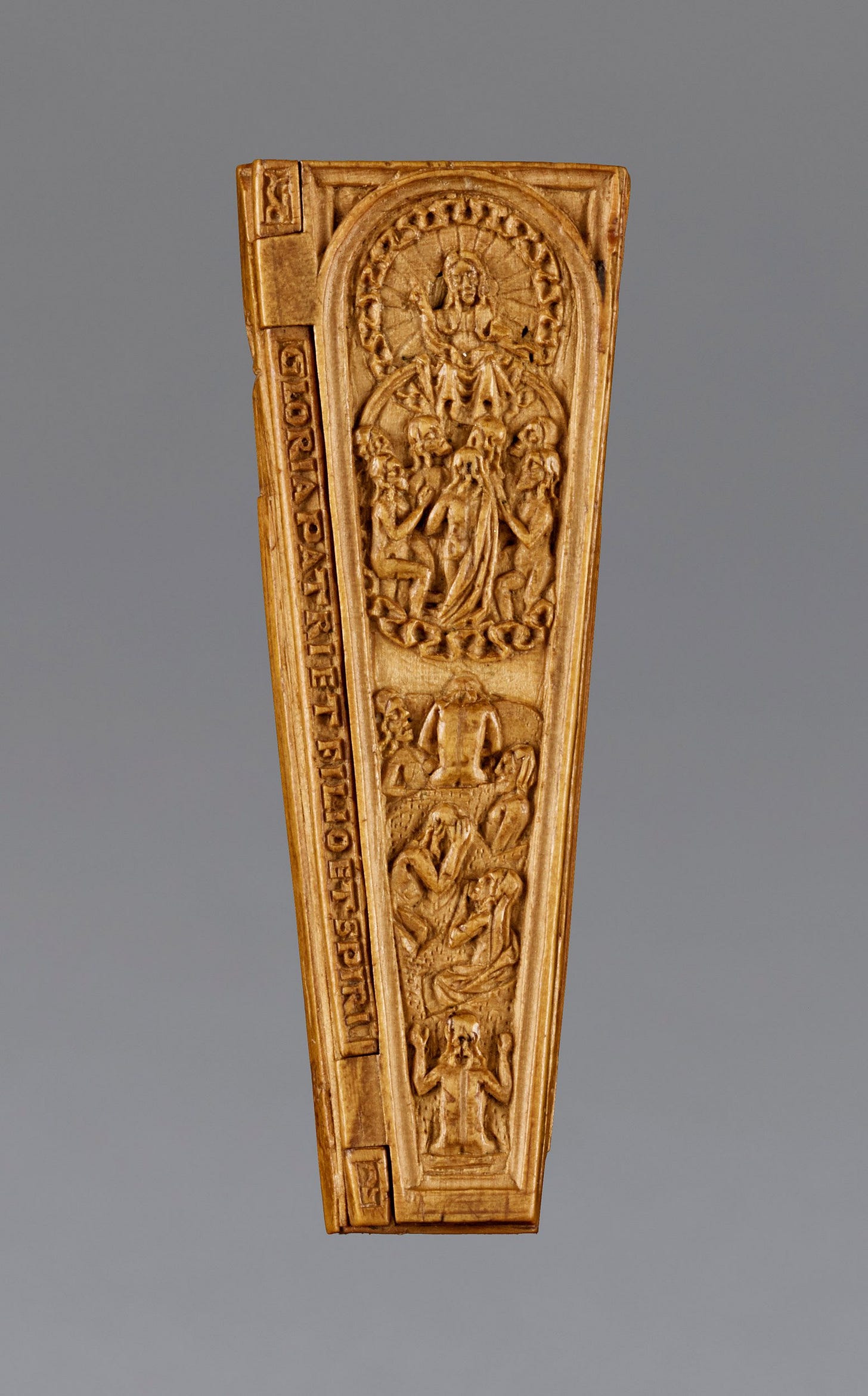
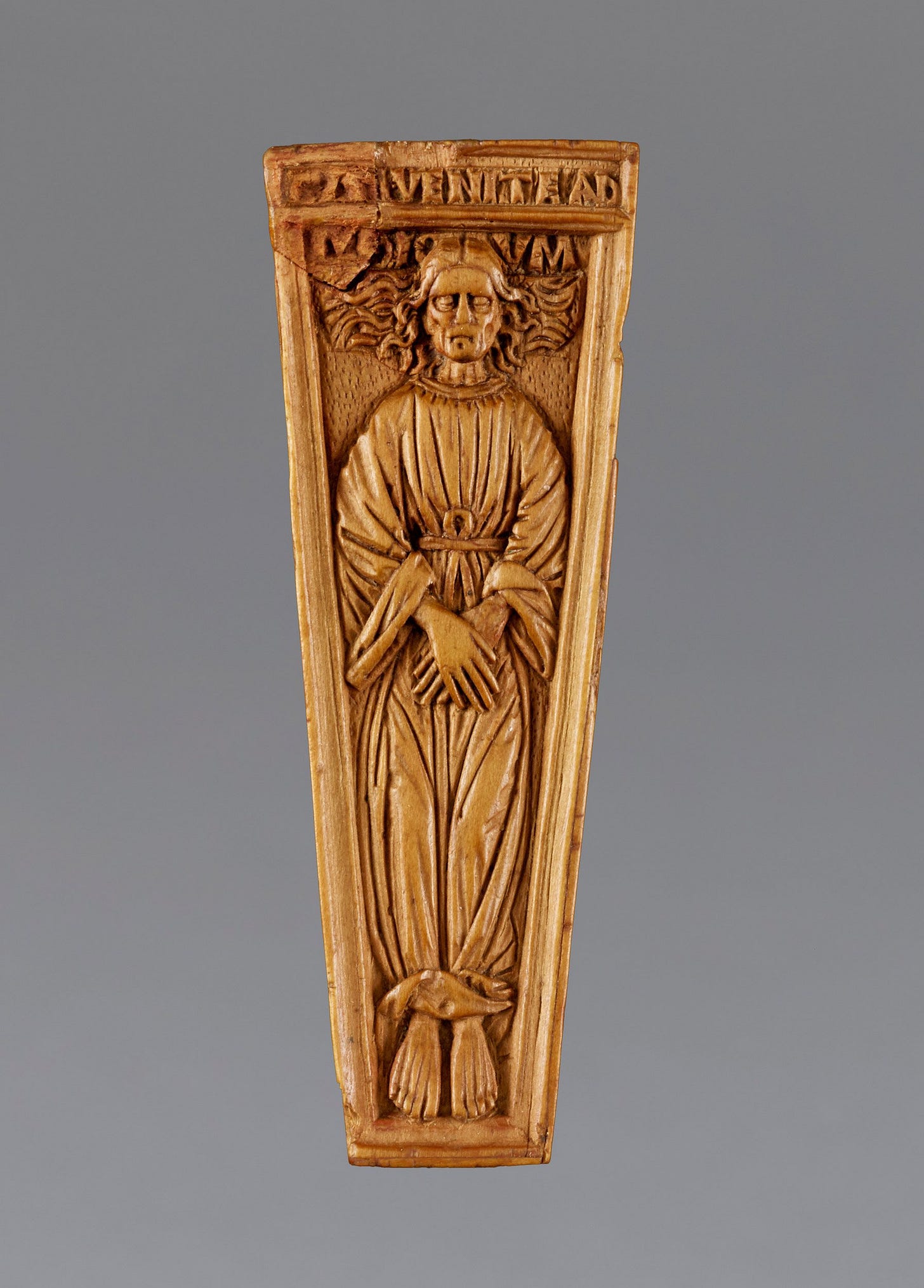
Both of those carvings are magnificent!